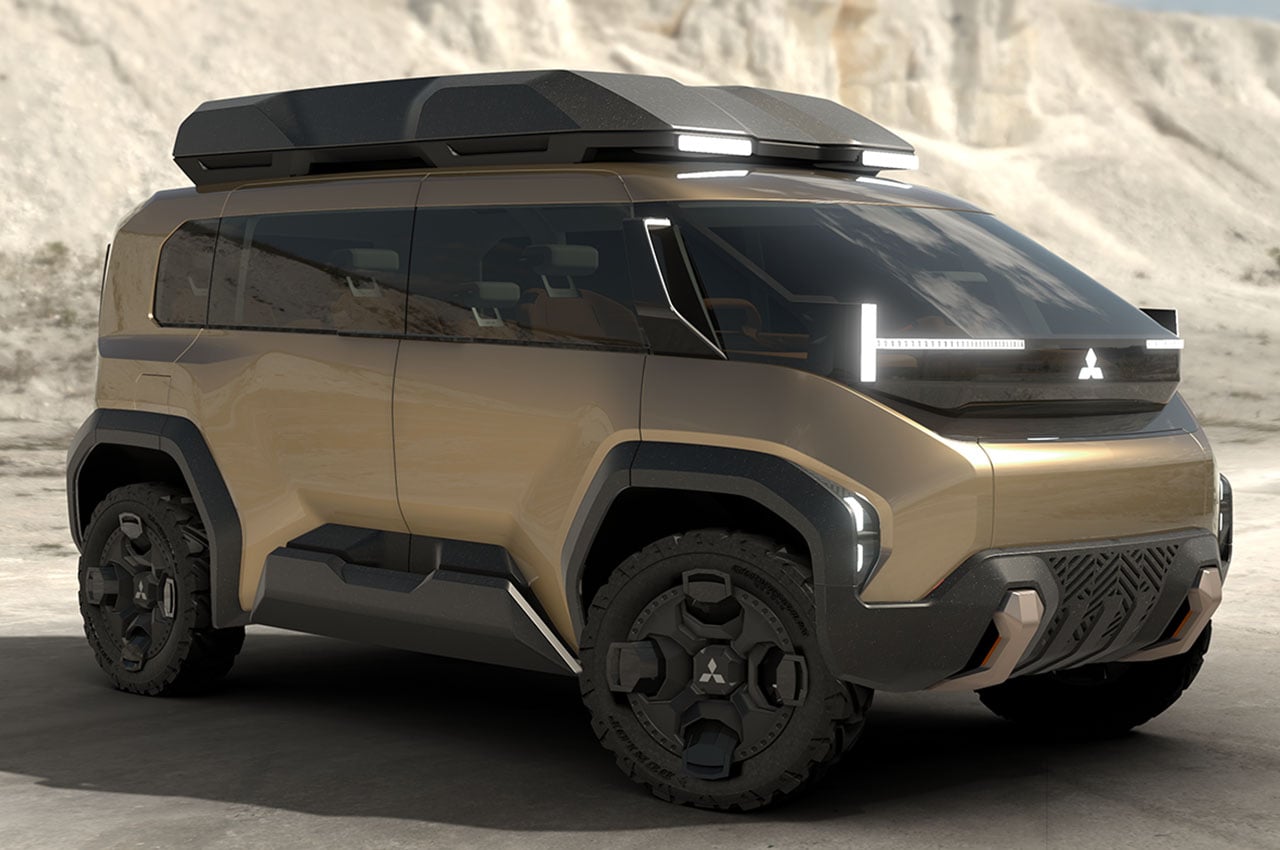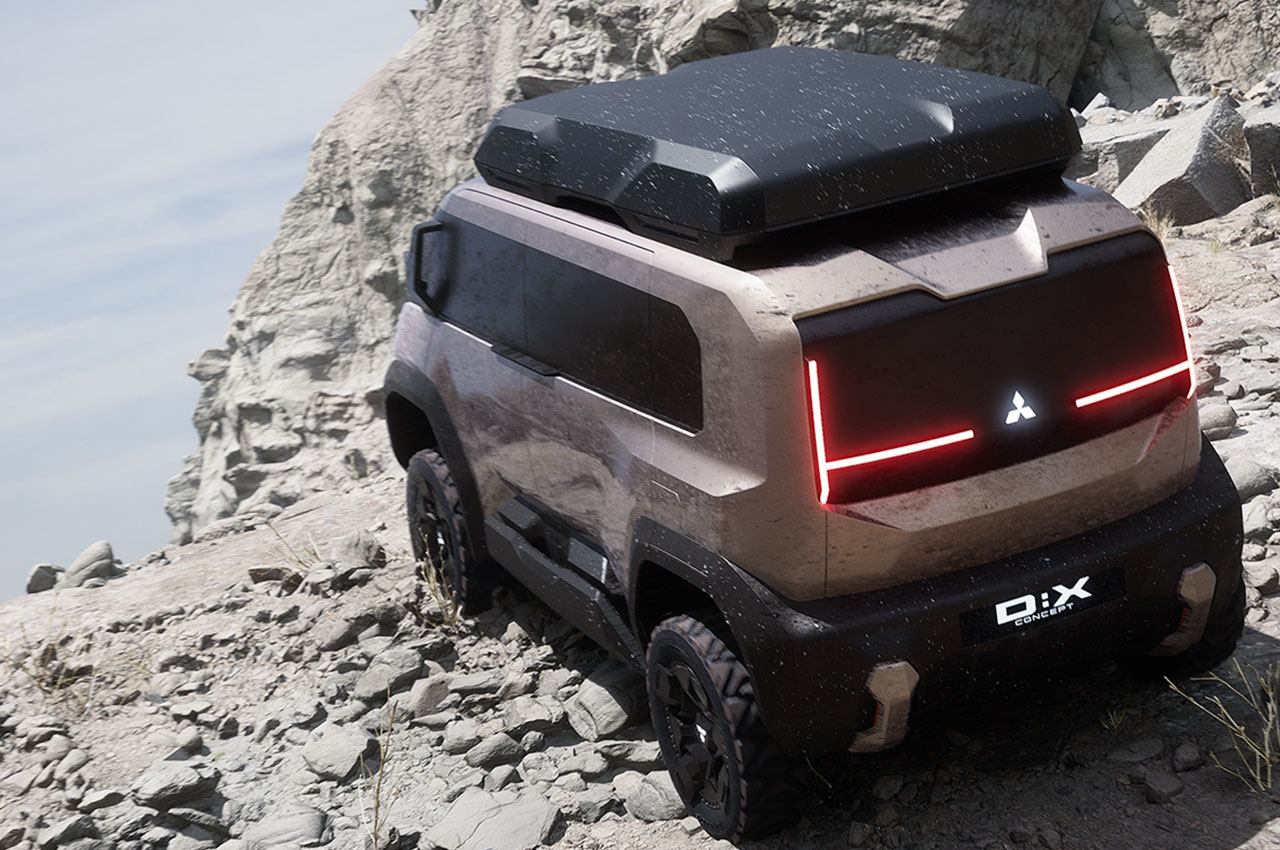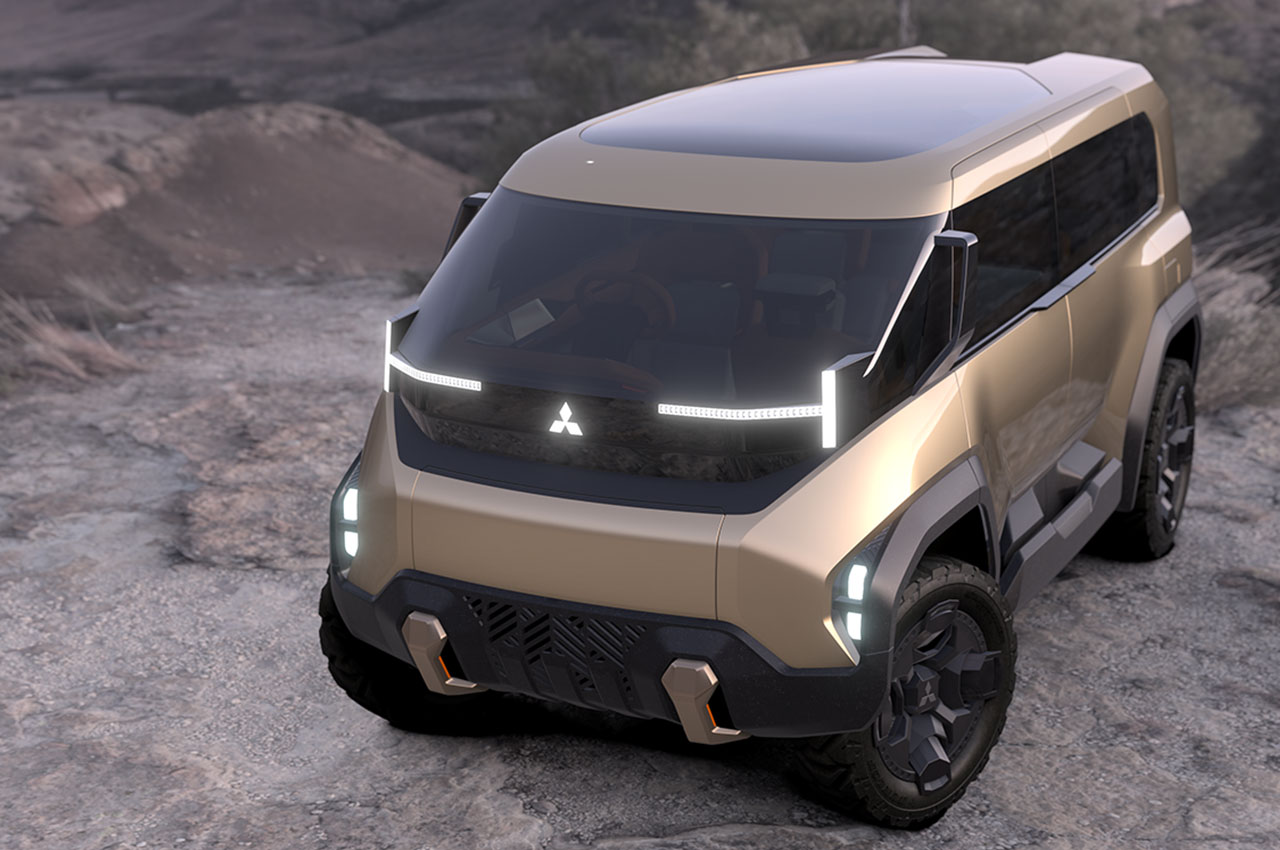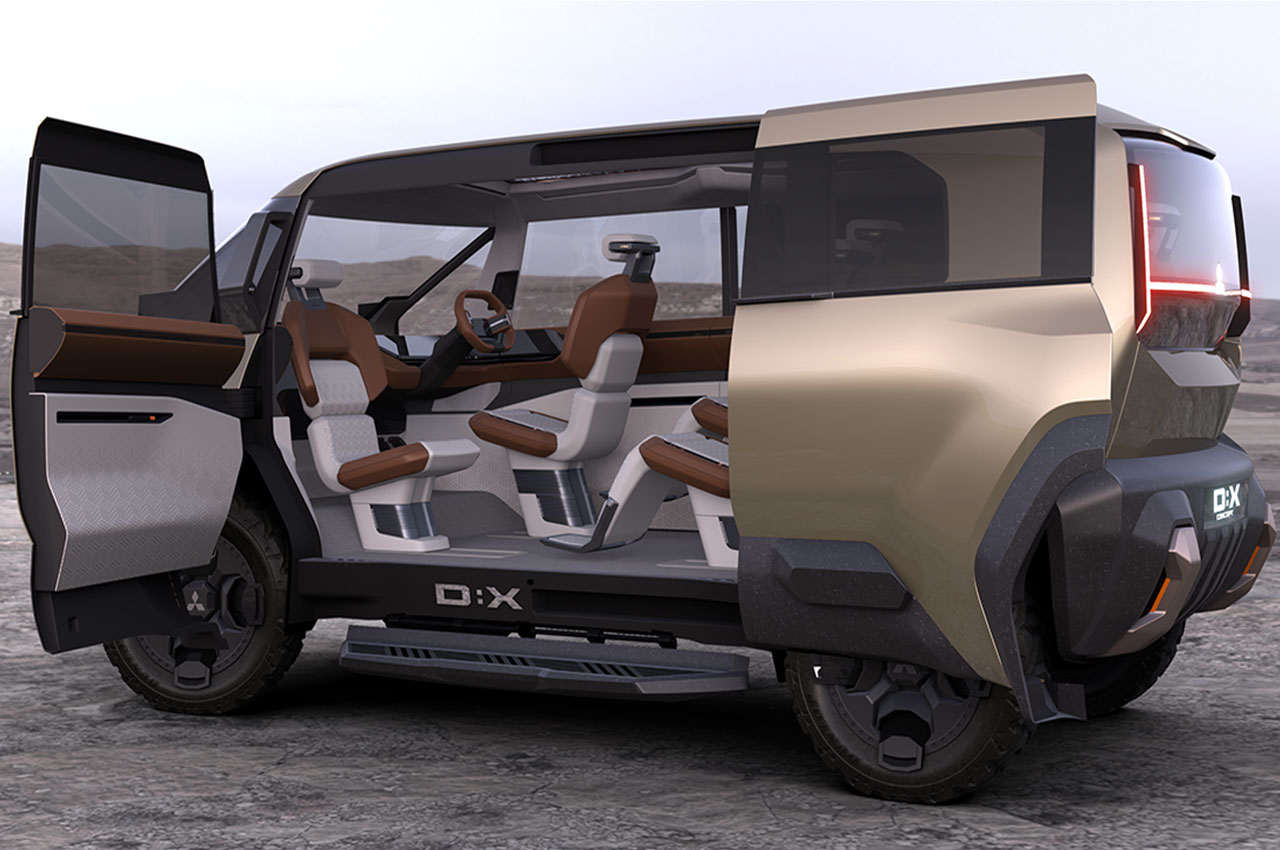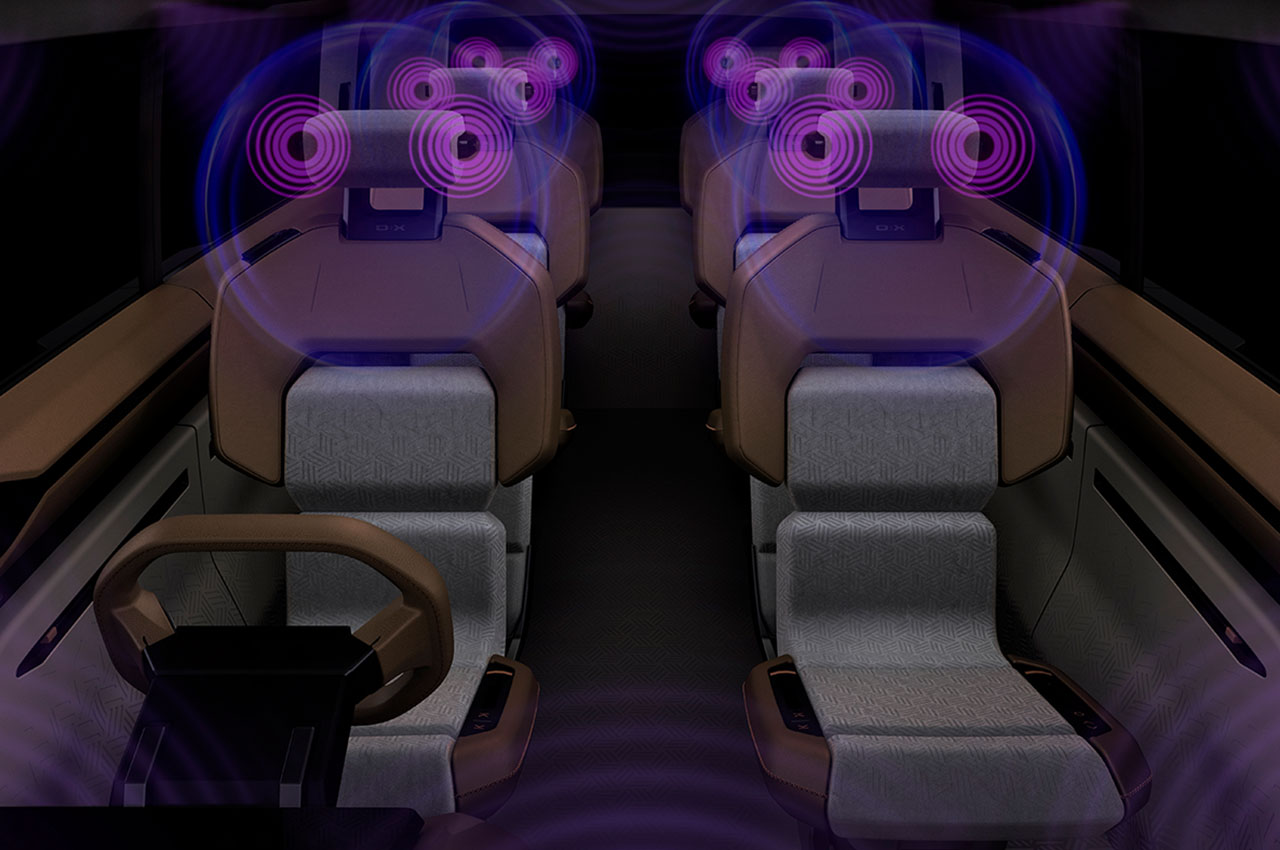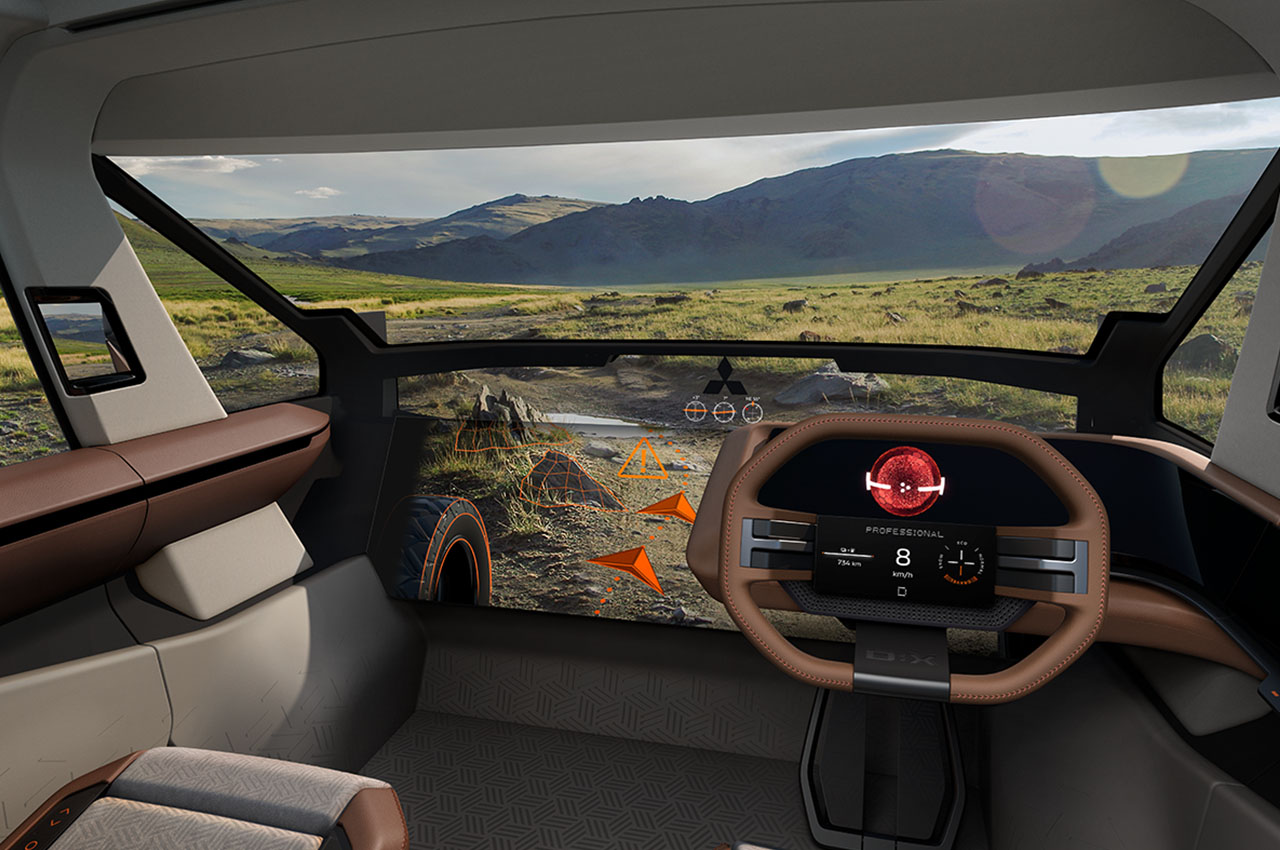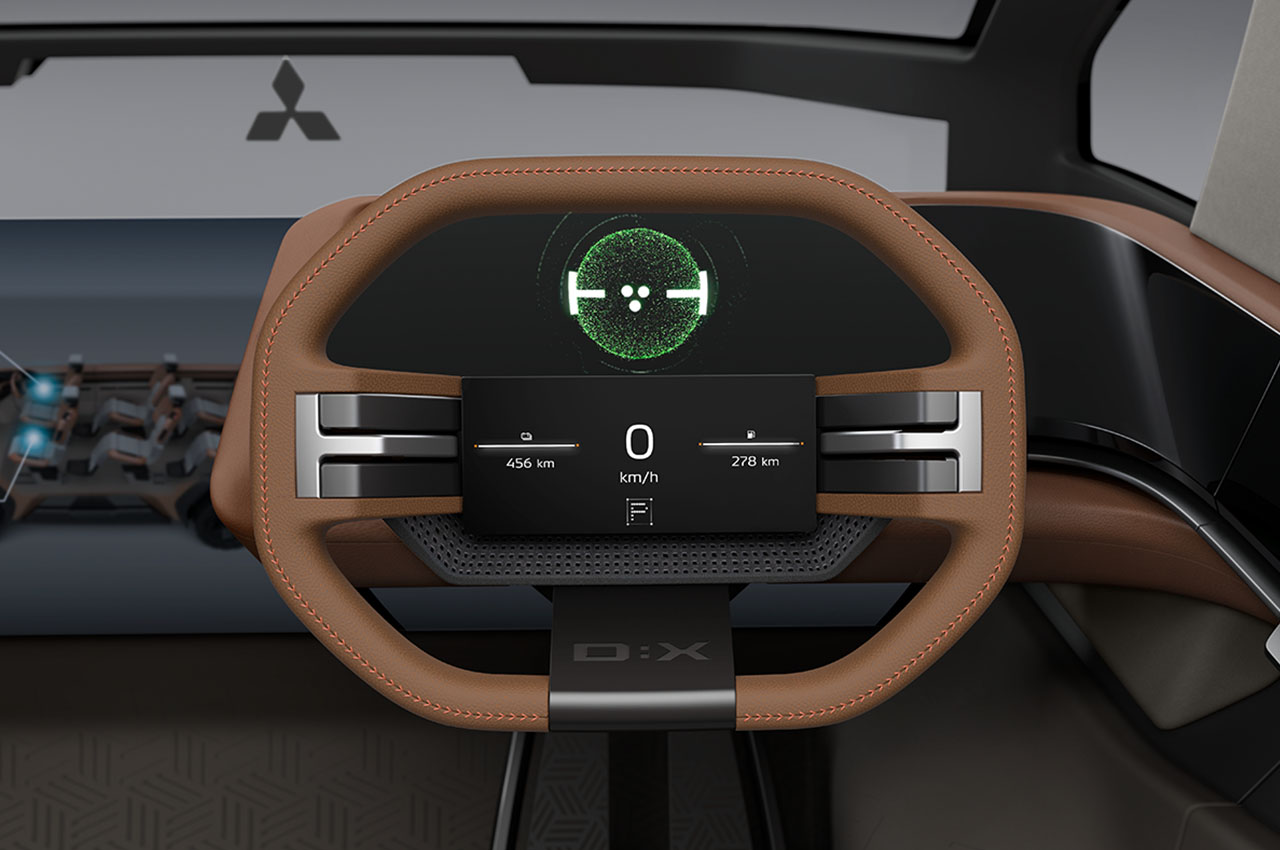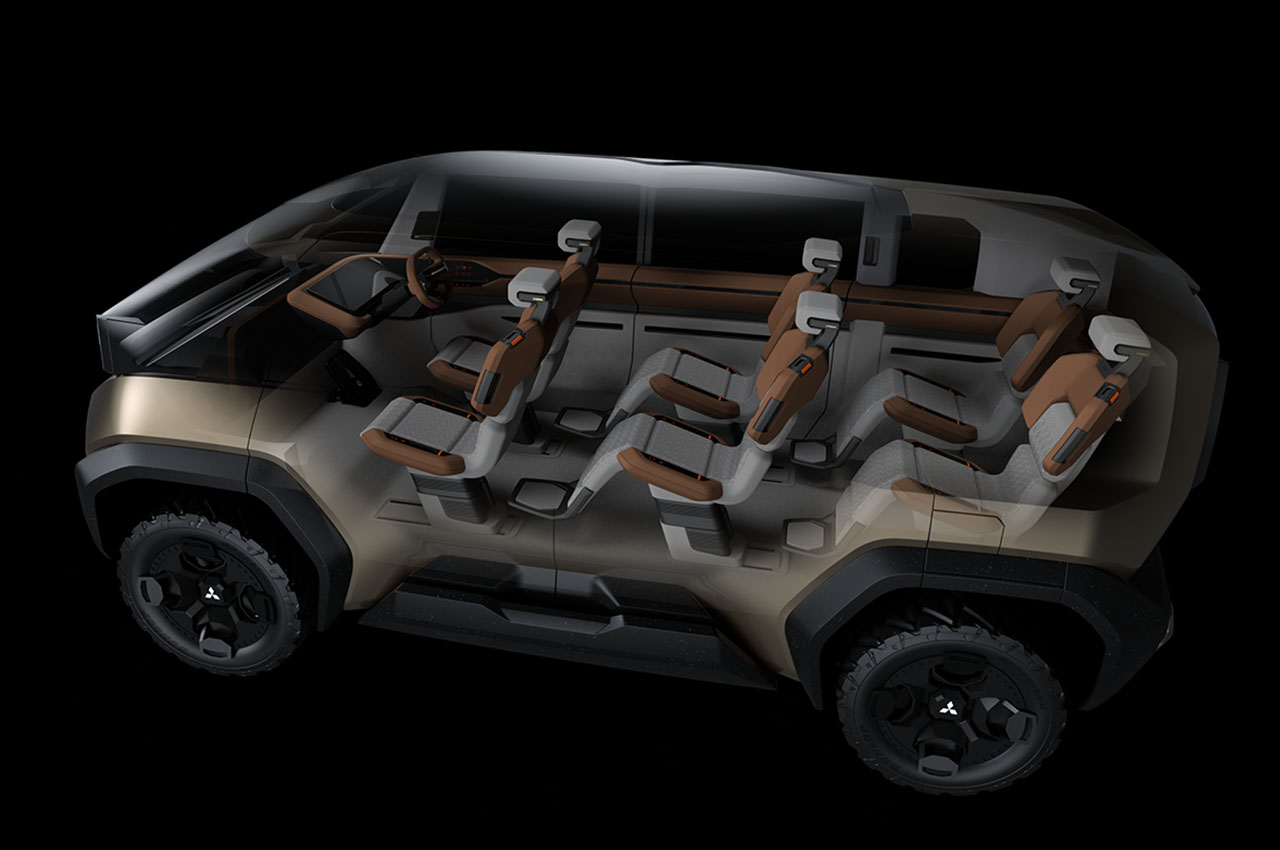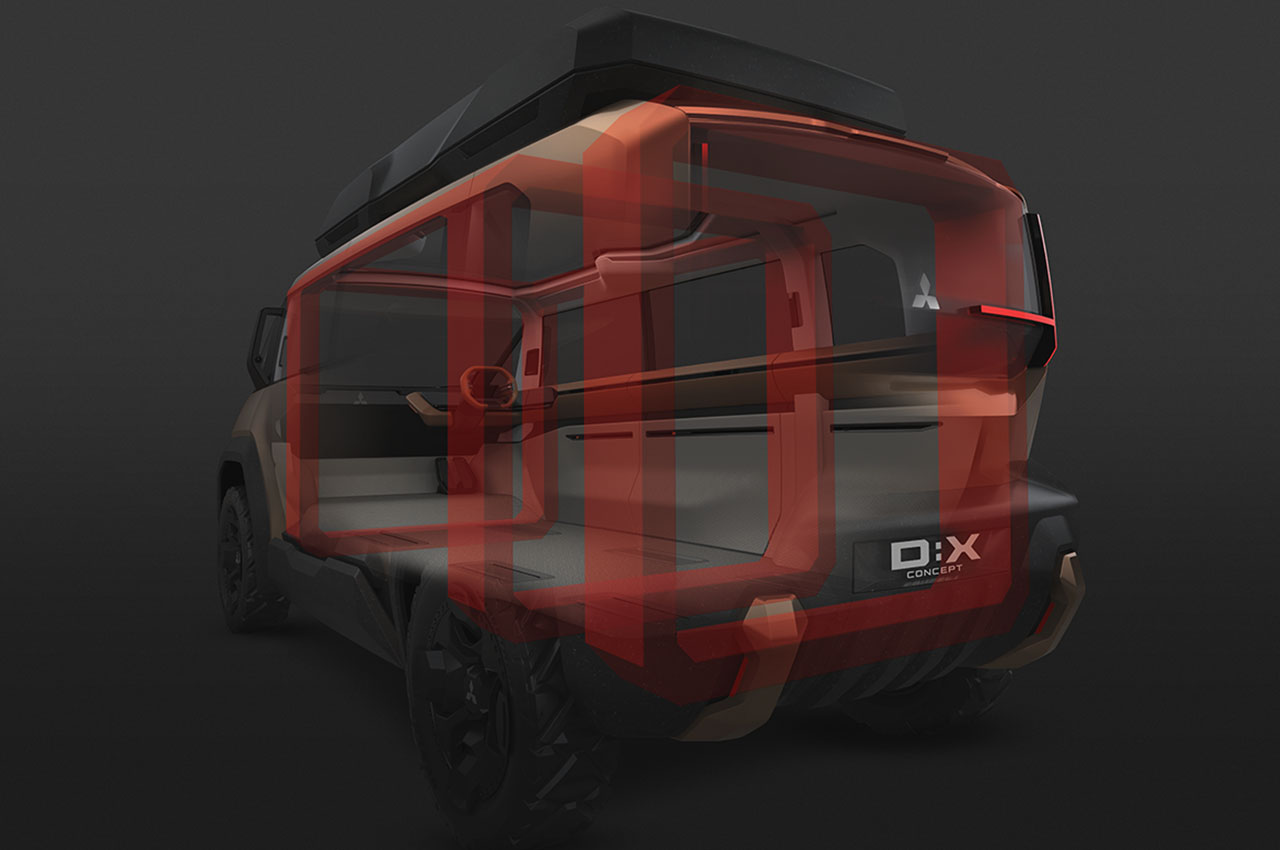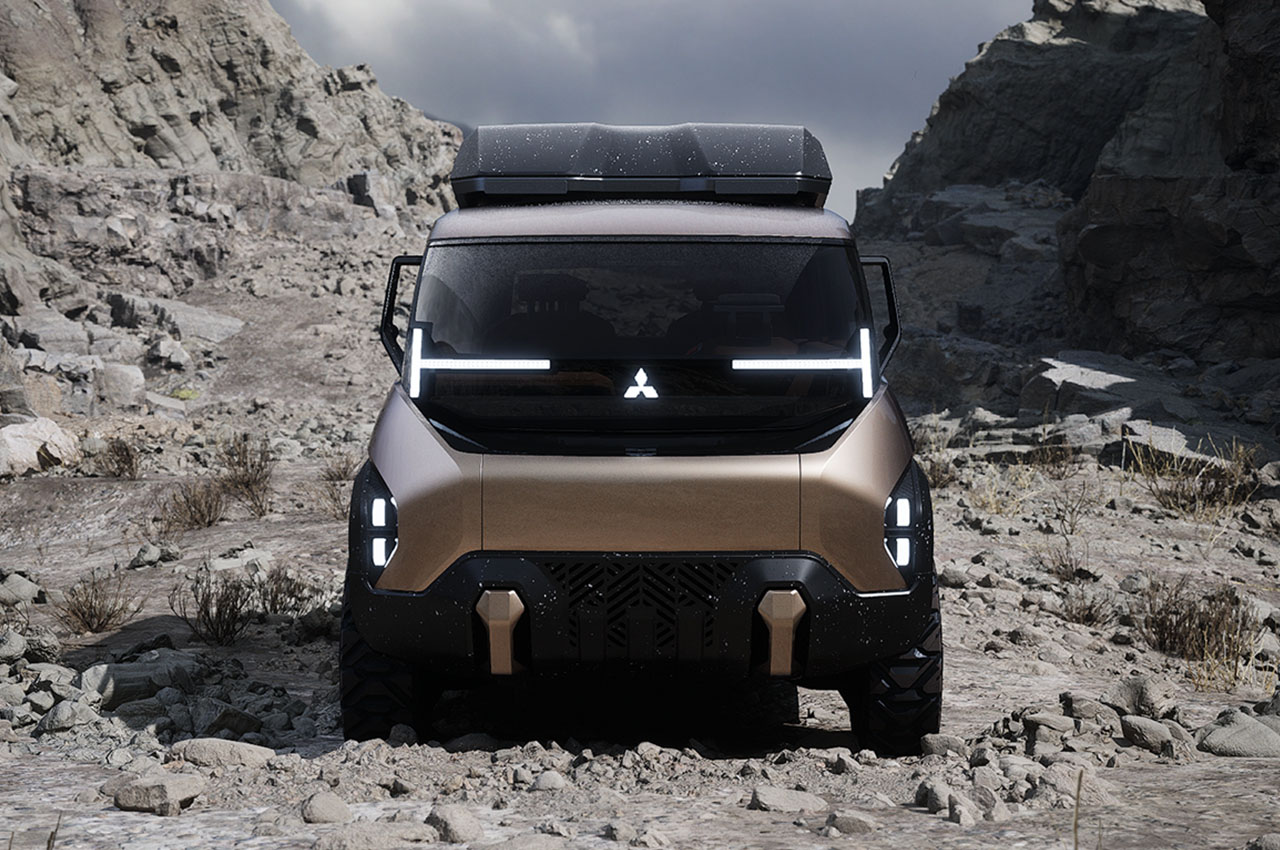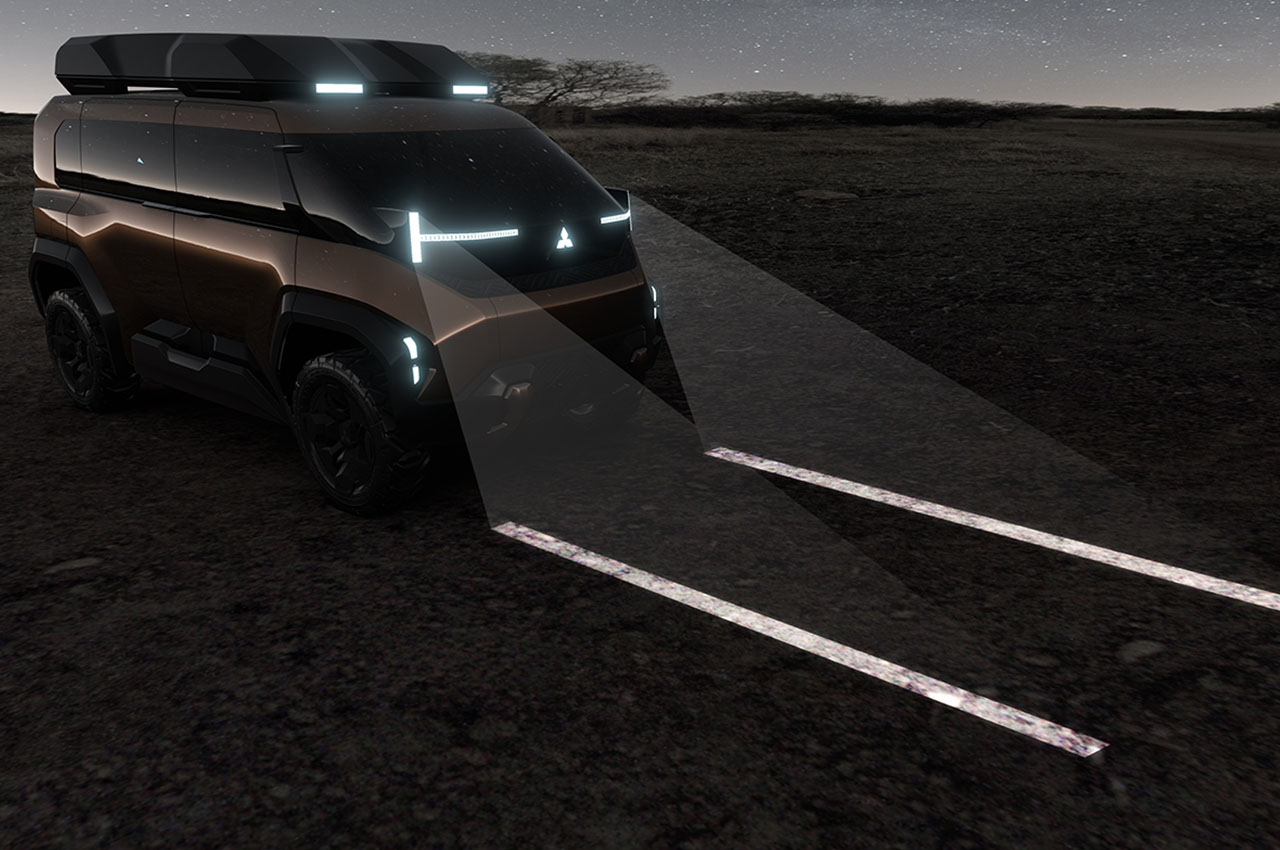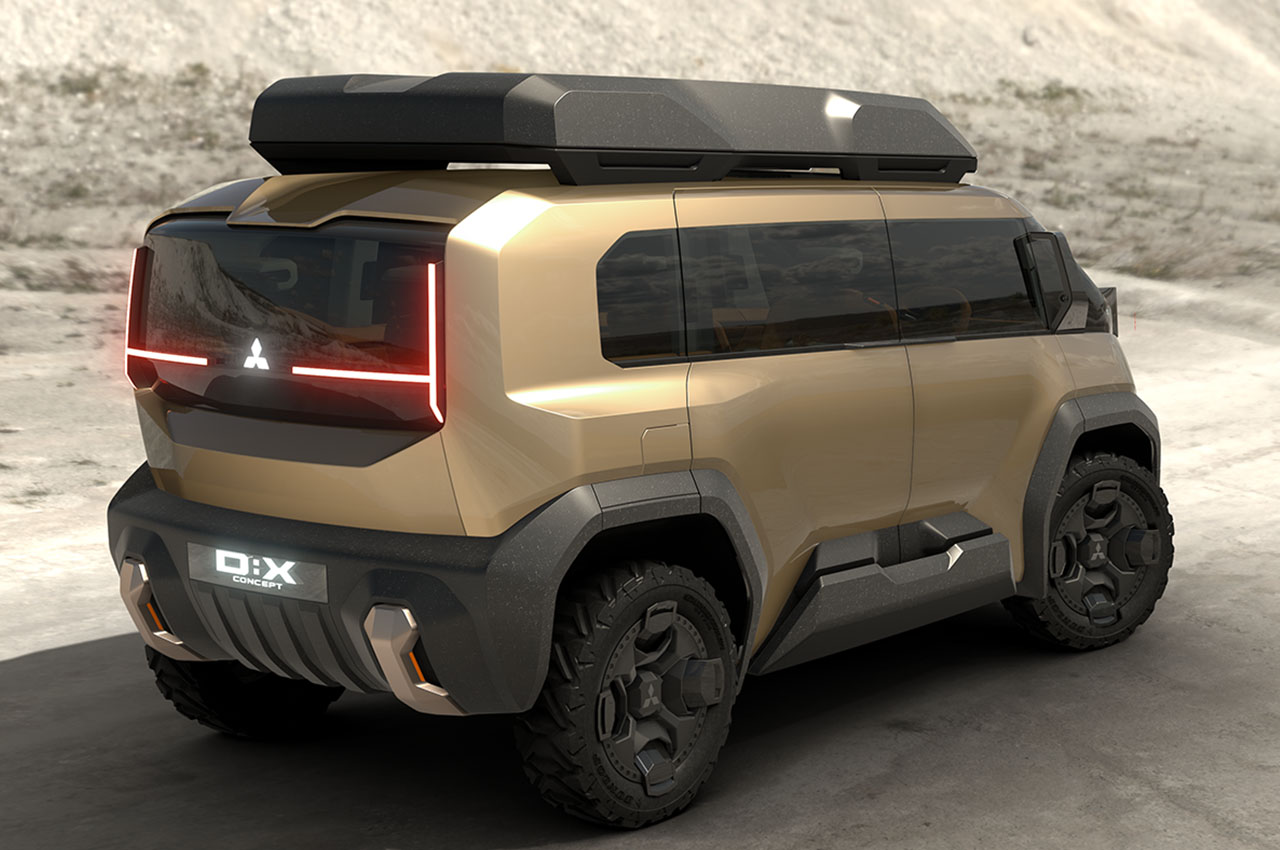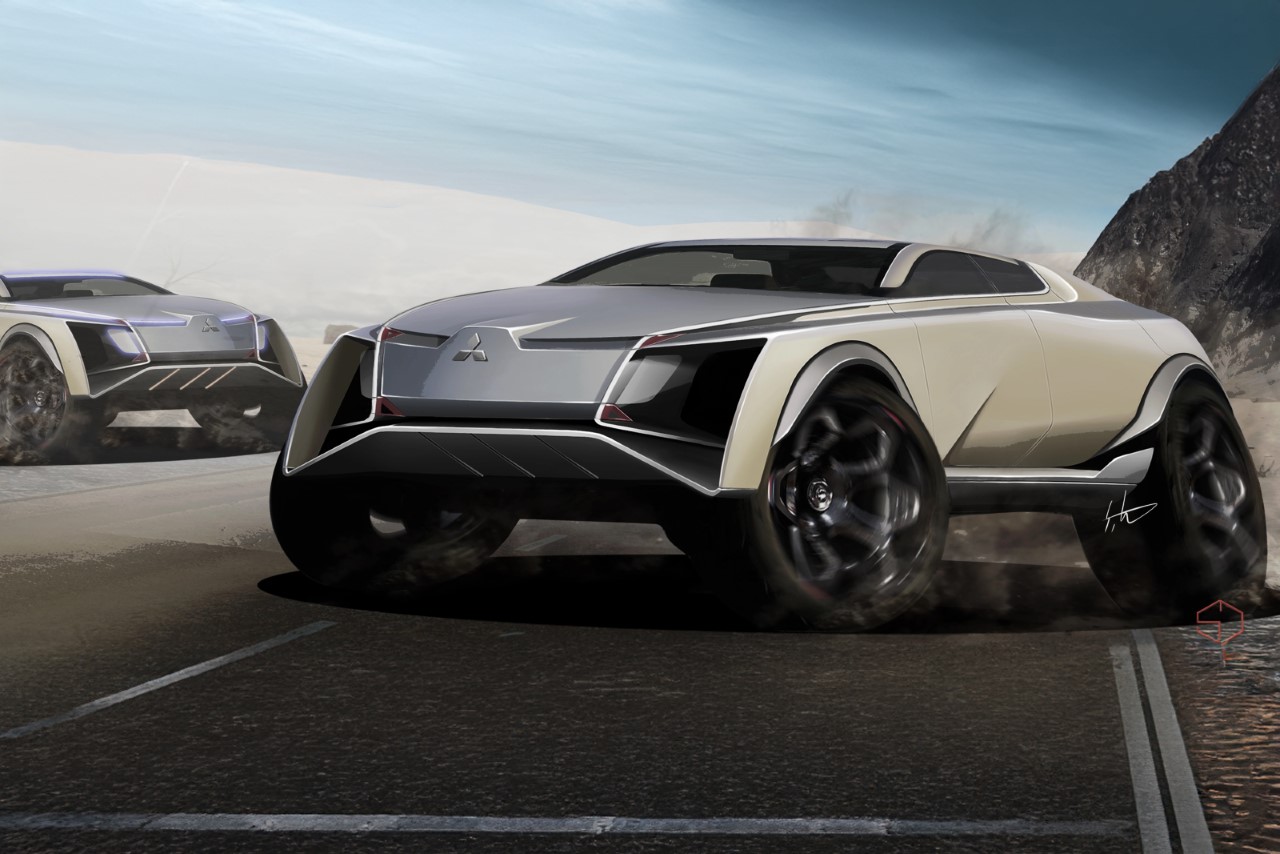
Forget everything you thought you knew about SUVs. The Mitsubishi Kaminari concept is a breath of fresh air, a bold vision for electric vehicles that can conquer any path. The name “Kaminari” translates to “thunder” in Japanese, perfectly capturing the essence of this powerful and rugged concept. The design draws inspiration from classic Mitsubishi vehicles like the 1937 PX33, Japan’s first all-road car. This connection to the past ensures that the Kaminari feels like a true evolution of Mitsubishi’s DNA.
Designer: Stefan Syarov
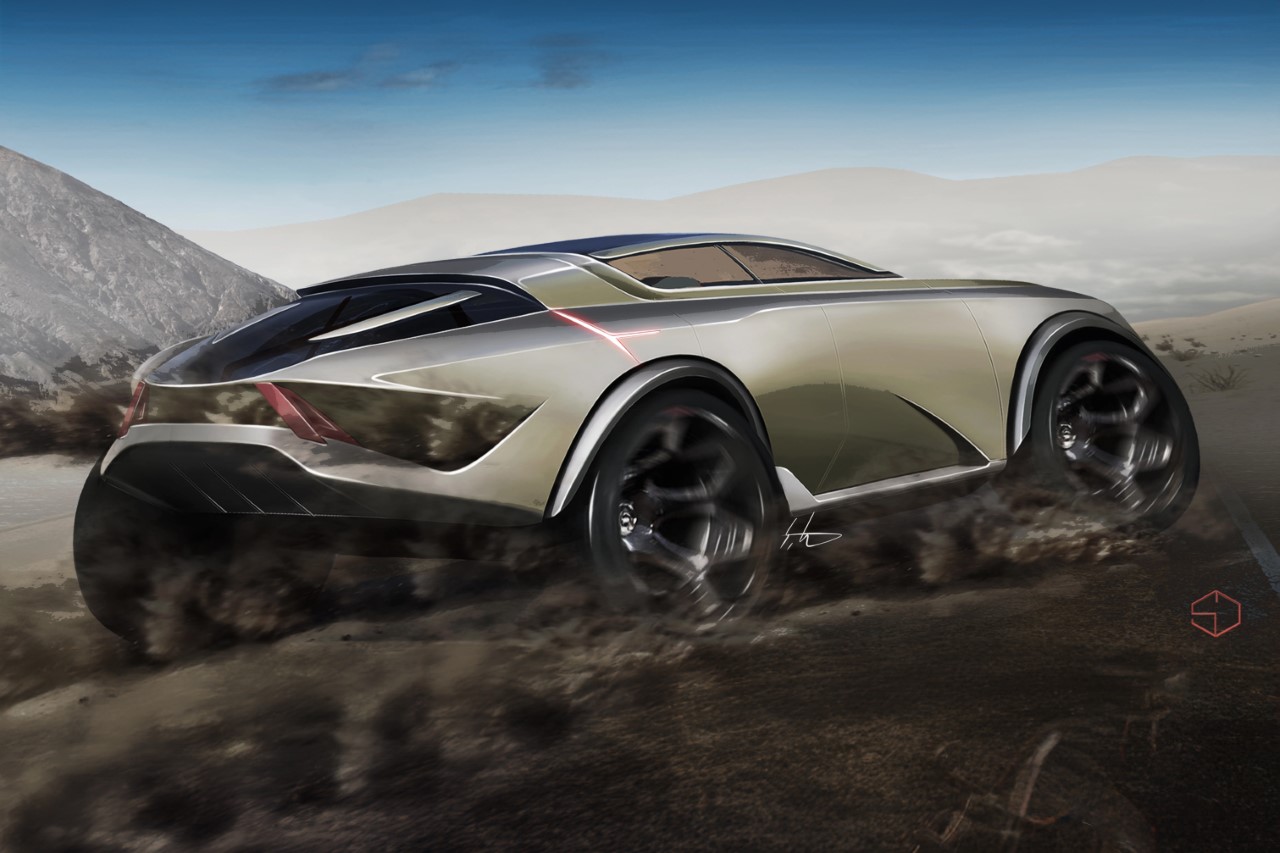
Syarov dubs the Kaminari as a PUV or Performance Utility Vehicle. From the very outset, Syarov’s goal was to design a car that pushes off-road performance limits while honoring Mitsubishi’s proud history. The Mitsubishi Kaminari draws inspiration from the brand’s rich off-road racing heritage. Classic vehicles like the 1937 Mitsubishi PX33, Japan’s first all-road car, informed the design. This homage to legendary Mitsubishi models ensures the Kaminari respects the brand’s legacy while offering a thoroughly modern take on the off-road adventure vehicle.
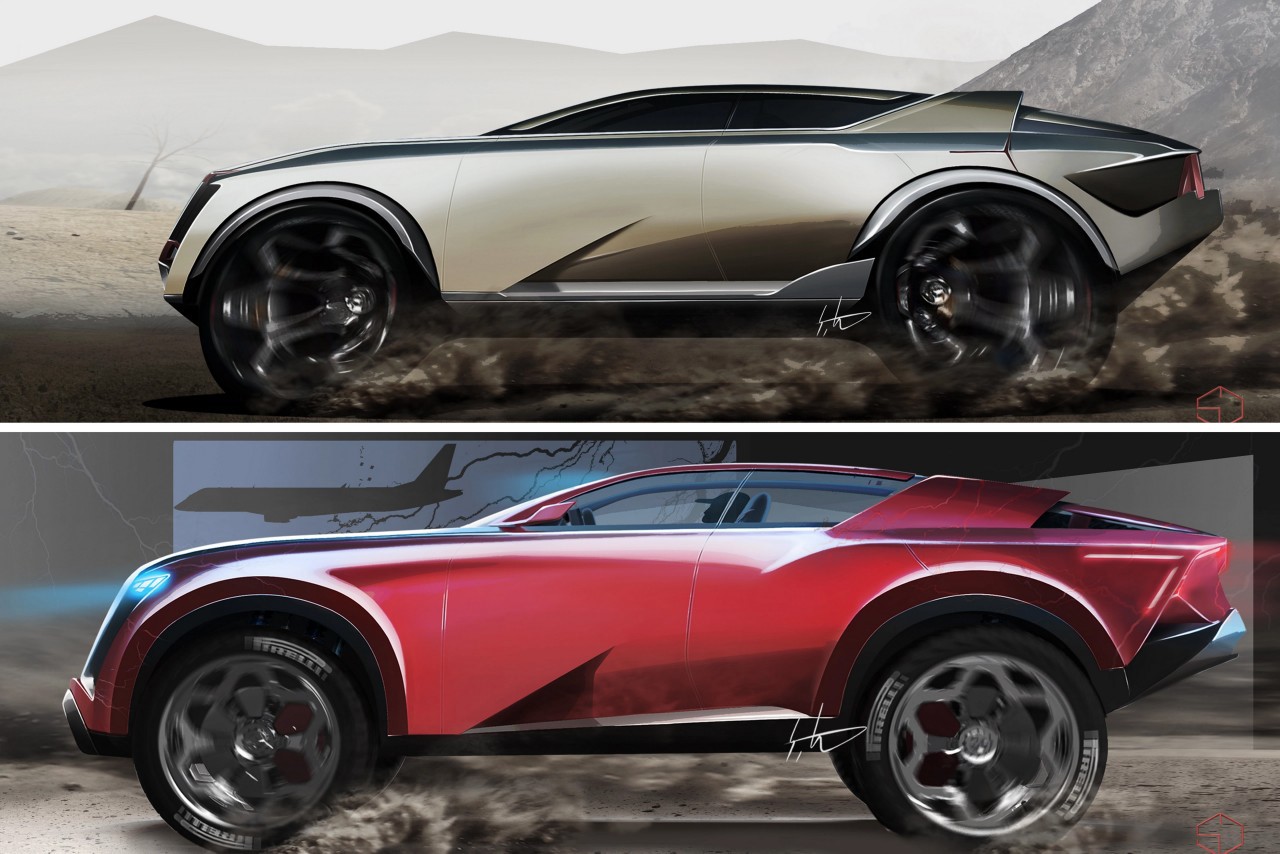
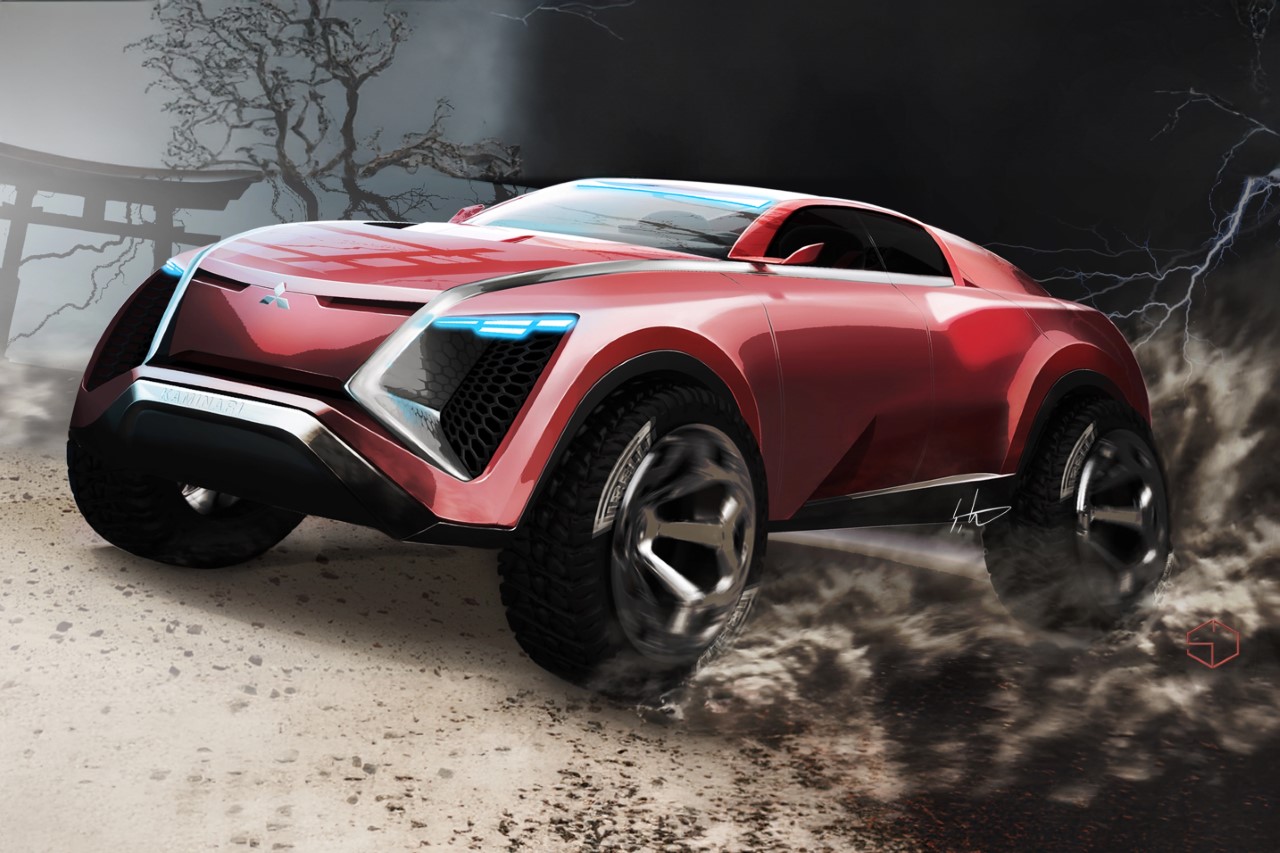
The Kaminari’s silhouette boasts a bold presence with a dramatically sloped A-pillar flowing into a sleek, coupe-inspired roofline. A distinctive rear wing integrated seamlessly into the roof adds a touch of dynamism without sacrificing passenger headroom. This design journey, from initial sketches to final form, involved meticulous refinement. Collaboration with the Mitsubishi team during Syarov’s internship led to key improvements, including retaining the functional headroom spoiler, reinforcing the dynamic underbody protection, and incorporating unique design cues that echo Mitsubishi’s off-road heritage.
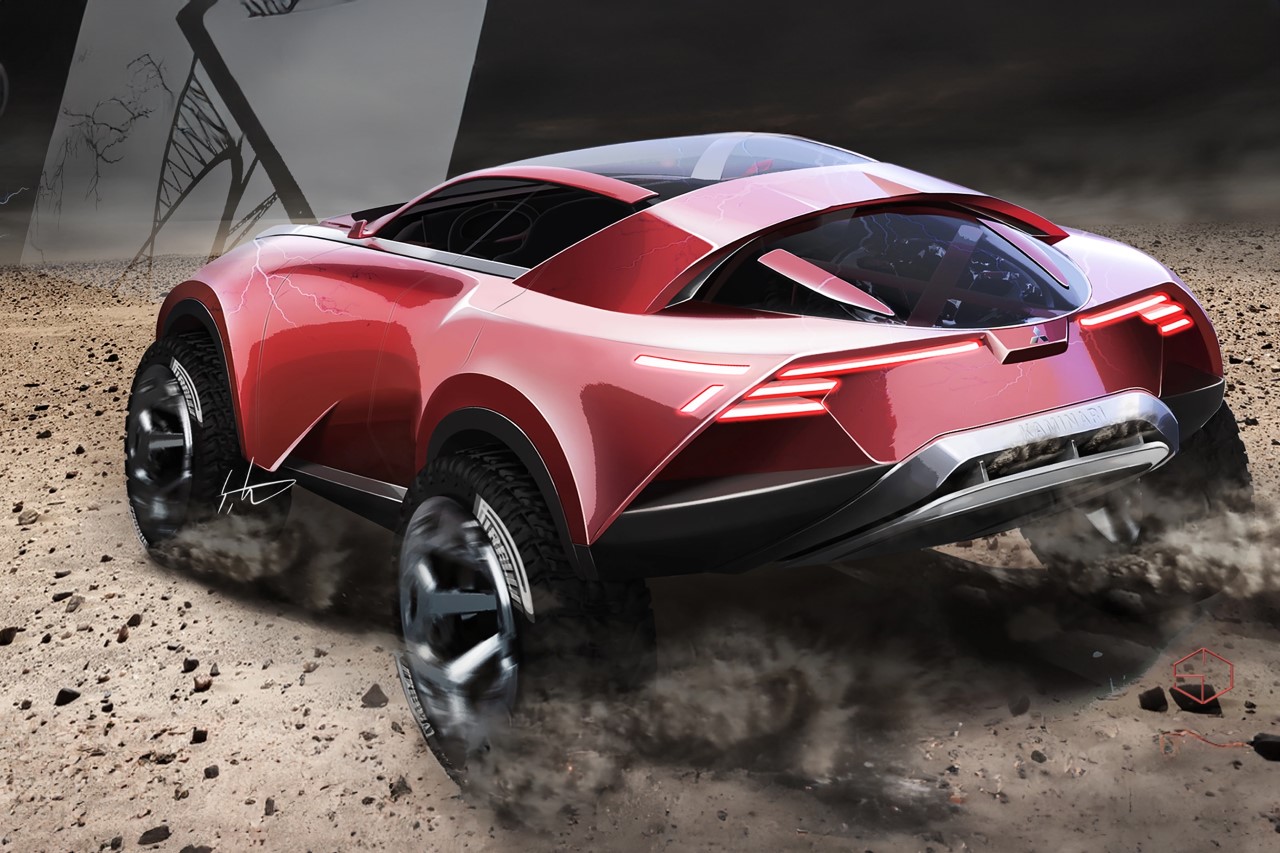
The spirit of collaboration is evident throughout the Kaminari’s development. The designer actively incorporated feedback from Mitsubishi enthusiasts worldwide. This two-way dialogue resulted in a concept that reflects not just the brand’s vision but also the desires of its loyal fanbase. Although the Kaminari isn’t an official Mitsubishi concept, it highlights what the brand has stood for all these years, while also envisioning what the brand could have been in an alternate reality where cars were designed not just for roads, but to dominate any surface they drove on.
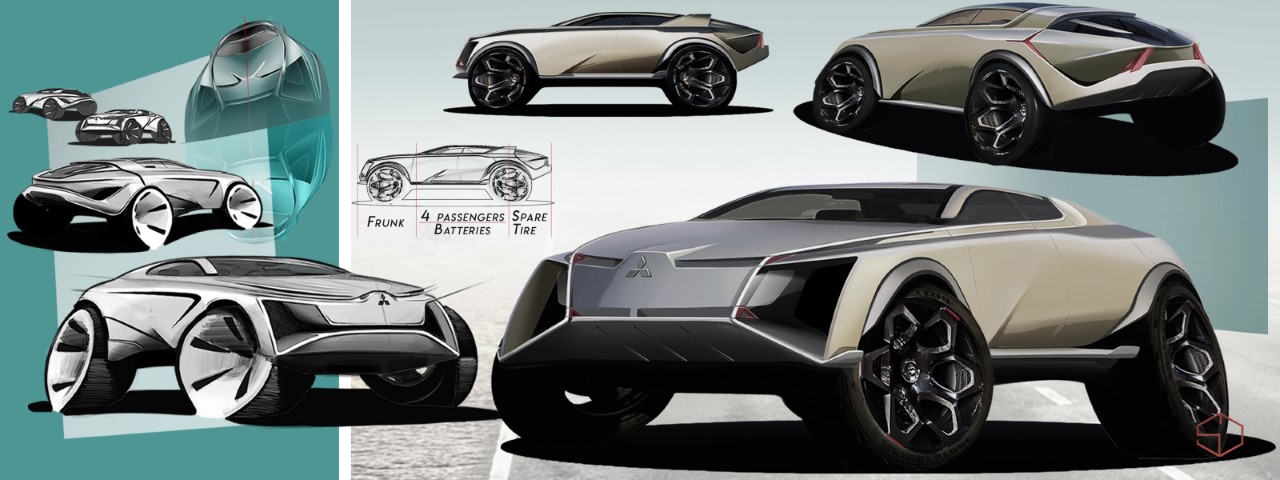
The post Mitsubishi Kaminari Concept: A Powerful Vision for the Future of Electric SUVs first appeared on Yanko Design.
